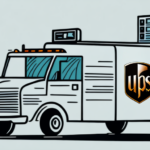How to Handle Chargebacks Effectively
In the landscape of online transactions, chargebacks stand out as one of the most frustrating and costly challenges for merchants. A chargeback occurs when a customer disputes a transaction, prompting the return of funds to the customer's account. Various factors can trigger a chargeback, including fraudulent activities, dissatisfaction with a product or service, or simple misunderstandings related to the transaction. Regardless of the cause, chargebacks can lead to significant lost revenue, increased operational costs, and potential damage to your business reputation. This comprehensive guide explores everything you need to know about chargebacks and provides strategies to effectively manage them, thereby minimizing their impact on your business.
Understanding Chargebacks: A Comprehensive Guide
Before delving into effective chargeback management strategies, it is crucial to understand what chargebacks are and how they function. A chargeback process typically involves multiple parties, including the customer, the merchant, the payment processor, and sometimes the card-issuing bank. When a customer disputes a transaction, they typically contact their bank or credit card company to initiate a chargeback. Reasons for chargebacks can include fraud, unauthorized transactions, or dissatisfaction with a product or service.
The bank or credit card company reviews the dispute, evaluating the provided evidence to determine whether to approve or deny the chargeback request. If approved, the funds are returned to the customer's account, and the merchant is debited not only the transaction amount but also additional fees that can range from $20 to $100 or more, as noted by Chargeback Gurus.
Chargebacks can significantly impact a merchant's business by resulting in lost revenue and damaging the merchant's reputation. Furthermore, a high chargeback rate can lead to increased scrutiny from payment processors and banks. In extreme cases, merchants with excessive chargebacks may face account termination or placement on high-risk lists, making it challenging to secure payment processing services in the future.
To mitigate chargebacks, merchants should prioritize customer satisfaction by ensuring clear and accurate product descriptions, easy returns and refunds, and exceptional customer service. Additionally, proactively monitoring transactions for signs of fraud or suspicious activity is essential in preventing chargebacks.
Common Reasons for Chargebacks and How to Prevent Them
Preventing chargebacks is crucial for maintaining the financial health and reputation of your business. Several common reasons for chargebacks include:
- Fraudulent Transactions: Unauthorized or fraudulent transactions initiated by malicious actors.
- Dissatisfaction with Products or Services: Customers unhappy with their purchase may dispute the charge.
- Misunderstandings: Miscommunication or confusion regarding the transaction details.
- Friendly Fraud: Customers intentionally dispute legitimate transactions for personal gain.
To prevent fraudulent activity, merchants should employ advanced fraud detection tools and continuously monitor transactions for suspicious patterns. Ensuring accurate and detailed product descriptions, along with clear refund and return policies, can significantly reduce misunderstandings and dissatisfaction among customers. Providing a seamless and positive customer experience further lowers the risk of chargebacks.
Friendly fraud, wherein customers dispute legitimate transactions without contacting the merchant first, poses a unique challenge. To combat this, ensure that customers can easily reach out with questions or concerns about their purchases. Clearly displaying your business name and contact information on receipts and statements helps customers recognize charges on their statements, minimizing confusion. Additionally, offering prompt and effective customer service can address issues before they escalate to chargebacks.
The Negative Impact of Chargebacks on Your Business
Chargebacks can have profound and enduring effects on your business beyond the immediate financial loss. The key negative impacts include:
- Revenue Loss: The immediate reversal of funds, along with associated fees, directly affects your bottom line.
- Reputation Damage: High chargeback rates signal to banks and credit card companies that your business may be high-risk or unreliable, damaging your reputation within the financial industry.
- Increased Processing Fees: Elevated chargeback rates can lead to higher transaction fees from payment processors, increasing operational costs.
- Restricted Payment Options: Payment processors may limit your access to certain payment methods or services based on your chargeback history.
- Account Termination: Excessive chargebacks can result in the termination of your merchant account, effectively cutting off your ability to accept credit card payments.
According to a Juniper Research report, merchants lose approximately $30 billion annually due to chargebacks and fraud-related activities. Mitigating chargebacks is essential not only for maintaining profitability but also for sustaining your business's operational capabilities and reputation.
Effective Communication with Customers to Avoid Chargebacks
Clear and effective communication between merchants and customers is pivotal in minimizing chargebacks. Key strategies include:
- Detailed Product Information: Provide accurate and comprehensive descriptions of your products or services to set clear customer expectations.
- Accessible Customer Service: Offer easy-to-find contact information and prompt support channels to address any issues before they escalate to chargebacks.
- Secure Checkout Process: Implement a user-friendly and secure checkout system to prevent accidental or unauthorized transactions, reducing potential disputes.
Transparency during the entire transaction process further aids in avoiding chargebacks. Ensure that customers are well-informed about shipping and delivery times, as well as any additional fees or charges they may incur. This upfront clarity helps prevent surprises that may lead to dissatisfaction and subsequent chargebacks.
Additionally, incorporating robust fraud prevention measures, such as Address Verification System (AVS) and Card Verification Value (CVV) codes, can significantly reduce the risk of fraudulent transactions. By proactively safeguarding against fraud, merchants can not only prevent chargebacks but also bolster their business reputation and customer trust.
Best Practices for Responding to a Chargeback Dispute
Despite robust prevention strategies, chargebacks can still arise. Prompt and effective responses to chargeback disputes are crucial in mitigating their impact. Best practices include:
- Timely Response: Address chargeback notifications without delay to adhere to payment processor deadlines and increase the chances of a favorable resolution.
- Comprehensive Evidence Collection: Gather detailed documentation such as order confirmations, customer communications, shipping and tracking information, and proof of delivery to support the validity of the transaction.
- Understanding Chargeback Reason Codes: Familiarize yourself with the specific reason codes used by payment processors to categorize chargebacks, enabling more targeted and effective responses.
- Collaboration with Payment Processors: Work closely with your payment processor to navigate the dispute process, ensuring that all required evidence is submitted correctly and within deadlines.
Organized and easily accessible documentation is essential when responding to a chargeback dispute. Maintain detailed records of all transactions, including invoices, receipts, and any contractual agreements or special terms related to the purchase. This preparation facilitates a clear and concise explanation of the transaction, bolstering your case during the dispute.
Maintaining open lines of communication with the customer involved in the dispute can expedite resolution and potentially prevent future chargebacks. Responsive customer service that addresses inquiries and resolves issues promptly enhances customer satisfaction and trust, reducing the likelihood of disputes escalating to chargebacks.
How to Gather Evidence and Build a Strong Case for a Chargeback Dispute
Effective chargeback dispute resolution hinges on the ability to present compelling evidence that substantiates the legitimacy of the transaction. Key evidence to gather includes:
- Order Confirmation Emails: Provide proof that the customer initiated the purchase.
- Shipping and Tracking Information: Demonstrate that the product was delivered to the customer as agreed.
- Customer Communications: Include any correspondence that indicates customer satisfaction or addresses concerns prior to the dispute.
- Proof of Authorization: Present records showing that the transaction was authorized by the customer.
- Refund and Return Policies: Supply documentation of your policies that were communicated to the customer.
Ensure that all collected evidence is organized systematically and submitted following the payment processor's guidelines. Clarity and organization of your documentation make it easier for the reviewing party to assess the validity of your case. According to Verifi, merchants who present thorough and well-organized evidence are significantly more likely to win chargeback disputes.
By meticulously compiling and presenting relevant evidence, merchants can effectively demonstrate that the transaction was valid and authorized, thereby increasing the likelihood of a favorable dispute outcome. This not only helps in avoiding additional fees but also preserves your business's reputation and credibility.
The Role of Payment Processors in Managing Chargebacks
Payment processors play a critical role in managing chargebacks, acting as intermediaries between merchants and banks or credit card companies. They offer valuable tools and resources for handling chargebacks, including:
- Fraud Detection and Prevention: Advanced algorithms and monitoring systems to identify and prevent fraudulent transactions.
- Dispute Management: Platforms and support for managing and responding to chargeback disputes efficiently.
- Chargeback Representation Services: Assistance in building and presenting your case during dispute resolution processes.
- Payment Processing Insights: Analytical tools that help identify chargeback trends and inform prevention strategies.
By leveraging these services, merchants can better navigate the complexities of chargeback management, reduce their occurrence, and minimize their impact. Collaborating closely with your payment processor ensures that you have the necessary support and resources to handle disputes effectively.
Strategies for Reducing the Number of Chargebacks Your Business Receives
While chargebacks are an inevitable aspect of online business, implementing effective strategies can significantly reduce their frequency and impact. Key strategies include:
- Clear Product Descriptions: Ensure that all product and service descriptions are accurate and detailed to set appropriate customer expectations.
- Secure and User-Friendly Checkout: Implement a secure, seamless checkout process to prevent accidental or unauthorized transactions.
- Responsive Customer Service: Provide prompt and helpful support to address customer inquiries and resolve issues before they escalate to chargebacks.
- Fraud Prevention Tools: Utilize tools such as Address Verification System (AVS) and Card Verification Value (CVV) to verify customer information and reduce the risk of fraudulent transactions.
- Transparent Policies: Clearly communicate your refund, return, and shipping policies to customers to prevent misunderstandings.
According to [Statista](https://www.statista.com/statistics/1111226/global-chargeback-rate/), implementing comprehensive fraud prevention and customer service strategies can reduce chargeback rates by up to 30%. By adopting these practices, merchants can create a safer and more trustworthy shopping environment, enhancing overall customer satisfaction and loyalty.
Balancing Customer Satisfaction with Fraud Prevention in Chargeback Management
Balancing effective fraud prevention with excellent customer service is essential in chargeback management. While preventing fraudulent activities is crucial, ensuring a positive customer experience is equally important. Strategies to achieve this balance include:
- Proactive Customer Service: Address customer concerns and disputes promptly to prevent them from escalating to chargebacks.
- Clear Refund and Return Policies: Establish and communicate straightforward policies that make it easy for customers to request refunds or returns.
- Transparent Transaction Processes: Provide clear information about transaction details, shipping times, and any additional fees to set accurate customer expectations.
- Empathetic Communication: Engage with customers in a respectful and understanding manner, especially when resolving disputes.
By maintaining transparency and responsiveness, merchants can foster trust and satisfaction among their customers, reducing the likelihood of chargebacks while still protecting against fraudulent activities. This holistic approach not only minimizes financial losses but also strengthens customer relationships and loyalty.
The Importance of Accurate Record Keeping in Chargeback Disputes
Accurate and meticulous record-keeping is fundamental to managing chargebacks effectively. Essential records to maintain include:
- Transaction Records: Detailed logs of all transactions, including dates, amounts, and customer information.
- Customer Communications: Copies of all interactions with customers, such as emails, chat logs, and phone call transcripts.
- Order Confirmations and Invoices: Documents that confirm the details of each purchase.
- Shipping and Tracking Information: Proof that products were delivered as agreed.
- Refund and Return Documentation: Records of any refunds or returns processed.
Keeping organized and accessible records allows merchants to quickly retrieve necessary information when responding to chargeback disputes. This preparedness is essential for presenting a strong case and increasing the likelihood of a favorable outcome. Additionally, analyzing chargeback data can help identify patterns and inform future prevention strategies.
According to [PCI Security Standards Council](https://www.pcisecuritystandards.org/), maintaining accurate records not only aids in chargeback management but also ensures compliance with industry standards, further safeguarding your business against financial and reputational risks.
Taking Legal Action Against Fraudulent Chargebacks
In extreme cases where fraudulent chargebacks are suspected, merchants may need to consider legal action to protect their interests. Options for legal recourse include:
- Filing a Lawsuit: Initiating legal proceedings against customers who consistently engage in fraudulent chargebacks.
- Engaging a Collection Agency: Working with professionals to recover lost funds from disputing customers.
- Contractual Enforcement: Enforcing terms and conditions outlined in your sales agreements to deter fraudulent behavior.
While legal action can be effective in recovering funds and deterring future fraudulent activities, it is often costly and time-consuming. Therefore, it should be considered a last resort after attempting other dispute resolution strategies. Consulting with legal professionals can help determine the best course of action based on the specifics of each case.
Preventative measures, such as thorough vetting of customers and implementing strict fraud detection protocols, can reduce the need for legal interventions by addressing fraudulent activities before they escalate to chargebacks.
Measuring the Success of Your Chargeback Management Strategy
Evaluating the effectiveness of your chargeback management strategy is essential for continuous improvement and minimizing their impact on your business. Key metrics and methods for measuring success include:
- Chargeback Rate: The number of chargebacks relative to total transactions, expressed as a percentage.
- Win Rate: The percentage of chargeback disputes that result in a favorable outcome for the merchant.
- Resolution Time: The average time taken to resolve chargeback disputes.
- Customer Satisfaction: Feedback and ratings from customers regarding their purchasing and customer service experience.
- Fraud Detection Accuracy: The effectiveness of fraud prevention tools in identifying and stopping fraudulent transactions.
Regularly analyzing these metrics allows merchants to identify trends, assess the effectiveness of current strategies, and make informed adjustments to their chargeback management approach. Tools provided by payment processors and specialized analytics software can facilitate this analysis, offering insights that drive strategic improvements.
According to [Forrester Research](https://www.forrester.com/), businesses that regularly measure and analyze their chargeback management strategies experience up to a 25% reduction in chargeback rates over time. Continuous evaluation and adaptation ensure that your strategies remain effective in the face of evolving fraud tactics and market conditions.
Collaborating with Other Merchants to Combat Fraud and Reduce Chargebacks
Collaboration among merchants is a powerful strategy in combating fraud and reducing chargebacks. By sharing knowledge, resources, and best practices, merchants can enhance their collective defenses against fraudulent activities. Key collaborative approaches include:
- Sharing Best Practices: Discussing effective fraud prevention and chargeback management techniques with other merchants.
- Participating in Industry Groups: Joining associations and groups focused on combating fraud and promoting secure online transactions.
- Collaborating with Payment Processors: Working closely with your payment processor to access advanced fraud detection tools and participate in joint initiatives.
- Information Sharing: Exchanging information about known fraudsters and suspicious activities to collectively reduce risk.
Such collaboration fosters a community-driven approach to fraud prevention, where shared vigilance and collective action enhance the overall security landscape. Initiatives like the [Merchant Fraud Prevention Alliance](https://www.mfpa.com/) provide platforms for merchants to connect, share insights, and implement coordinated strategies against common threats.
By working together, merchants can create a more secure and reliable online commerce environment, protecting their businesses and promoting positive customer experiences across the industry.
Maintaining PCI Compliance Standards to Minimize Risk of Chargebacks
Maintaining compliance with the Payment Card Industry Data Security Standards (PCI DSS) is essential for minimizing the risk of chargebacks and other fraudulent activities. PCI DSS compliance involves adhering to a set of security standards designed to ensure that all companies that accept, process, store, or transmit credit card information maintain a secure environment. Key aspects of PCI compliance include:
- Data Security: Protecting cardholder data through encryption, secure storage, and safe transmission practices.
- Regular Security Audits: Conducting periodic assessments to identify and remediate vulnerabilities in your payment processing systems.
- Access Control: Restricting access to cardholder data to only those employees who need it to perform their job functions.
- Network Security: Implementing firewalls, anti-virus software, and other security measures to protect your network from unauthorized access.
Adhering to PCI DSS not only helps in reducing the risk of data breaches and fraudulent transactions but also demonstrates to customers and partners that your business is committed to data security. Non-compliance can result in hefty fines, increased scrutiny, and higher chargeback rates, further emphasizing the importance of maintaining these standards.
According to the PCI Security Standards Council, businesses that achieve and maintain PCI compliance experience lower chargeback rates and enhanced customer trust. Regularly reviewing and updating your security practices in line with PCI DSS requirements ensures ongoing protection against evolving security threats.




















